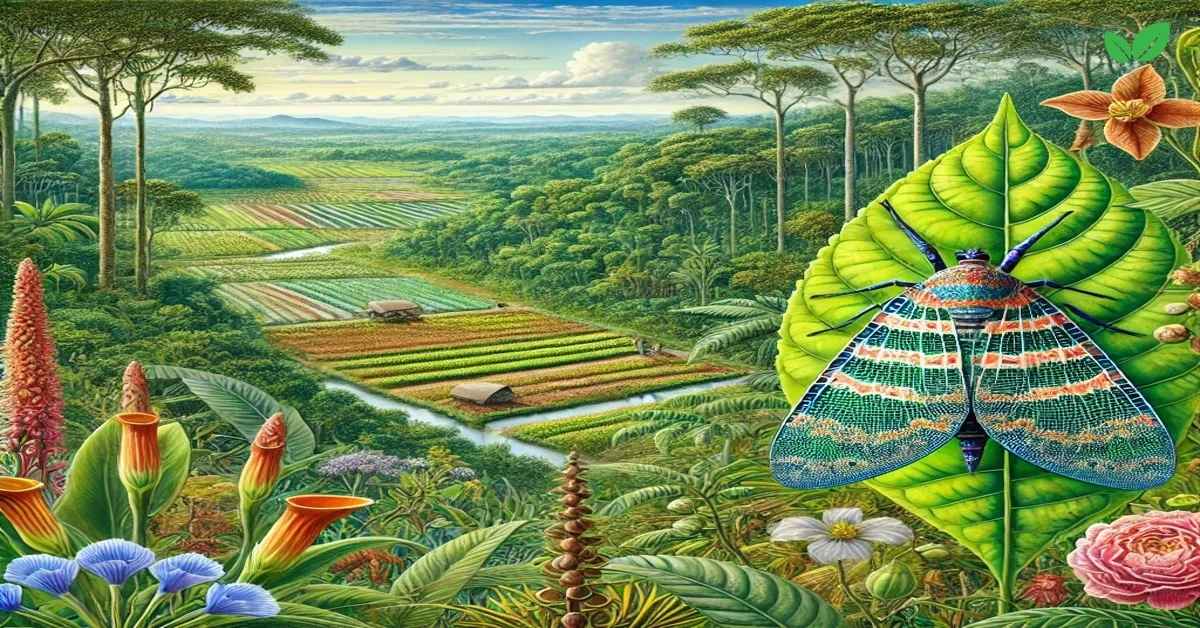Introduction
The discovery of new species in the world of entomology can bring both excitement and concern, especially when those species have the potential to impact ecosystems and economies. One such species, the Vietnam Cambodia new lanternfly species, has recently been making headlines due to its environmental and agricultural implications. Lanternflies are known for their striking appearance, and the new species discovered in Vietnam and Cambodia is no exception. However, beyond their aesthetic appeal, lanternflies can present serious challenges to plant health, particularly crops of economic importance.
This article will explore the Vietnam Cambodia new lanternfly species, its environmental niche, habitat, feeding behaviors, ecological role, and the challenges it presents to both natural ecosystems and agriculture. Understanding the environmental niche of this new lanternfly species is critical for developing management strategies and minimizing its impacts.
1. Taxonomy and Morphological Features
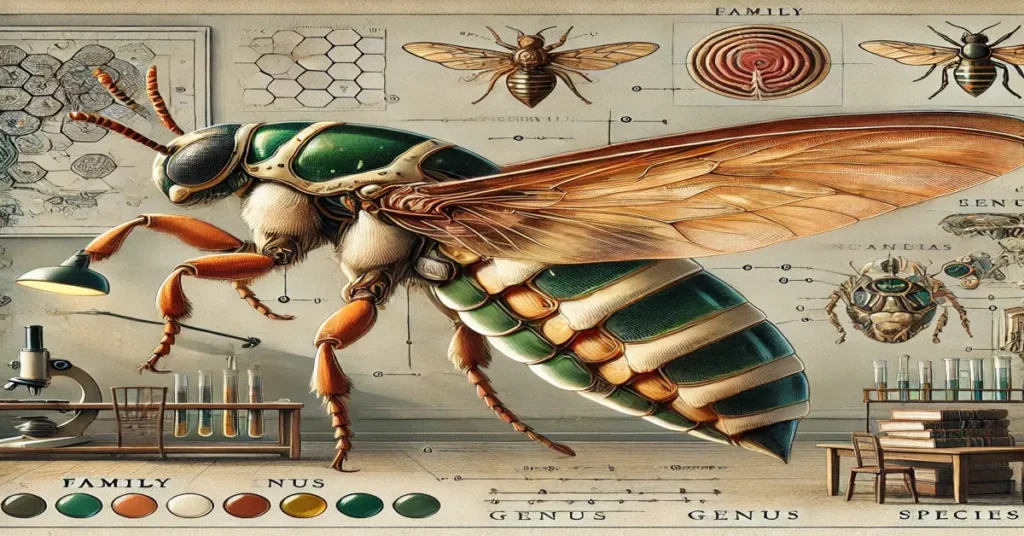
Taxonomic Classification
The Vietnam Cambodia new lanternfly species belongs to the family Fulgoridae, which includes over 1,000 species of lanternflies. The newly discovered species found in Vietnam and Cambodia is classified under this family, sharing similarities with other lanternfly species but exhibiting unique features that make it stand out.
- Kingdom: Animalia
- Phylum: Arthropoda
- Class: Insecta
- Order: Hemiptera
- Family: Fulgoridae
- Genus: [Insert genus name]
- Species: [Insert species name]
Morphological Characteristics
The Vietnam Cambodia new lanternfly species shares many characteristics with its relatives in the Fulgoridae family but also has distinguishing features that make it identifiable.
- Size and Shape:
- This lanternfly species is medium-sized, typically measuring around 3 to 4 cm in body length, with a wingspan of about 5–7 cm. Its elongated body and prominent head are typical of lanternflies.
- Coloration:
- The Vietnam Cambodia new lanternfly species displays striking coloration with red, brown, and white patterns across its wings. This vibrant color scheme serves multiple purposes: attracting mates and potentially deterring predators.
- Antennae and Proboscis:
- Like other lanternflies, the Vietnam Cambodia new lanternfly species has long antennae that are sensitive to chemical signals, helping it find host plants. Its proboscis is a specialized mouthpart used for piercing plant tissues to feed on sap.
- Distinctive Horn or “Lantern”:
- One of the most remarkable features of the Vietnam Cambodia new lanternfly species is the horn-like projection on its head. This characteristic is typical of the lanternfly family and may serve as a defense mechanism against predators.
2. Habitat and Distribution
The Vietnam Cambodia new lanternfly species is native to the tropical rainforests and subtropical forests of Southeast Asia. Its discovery in both Vietnam and Cambodia highlights the biodiversity of these regions and the potential risks posed by the species.
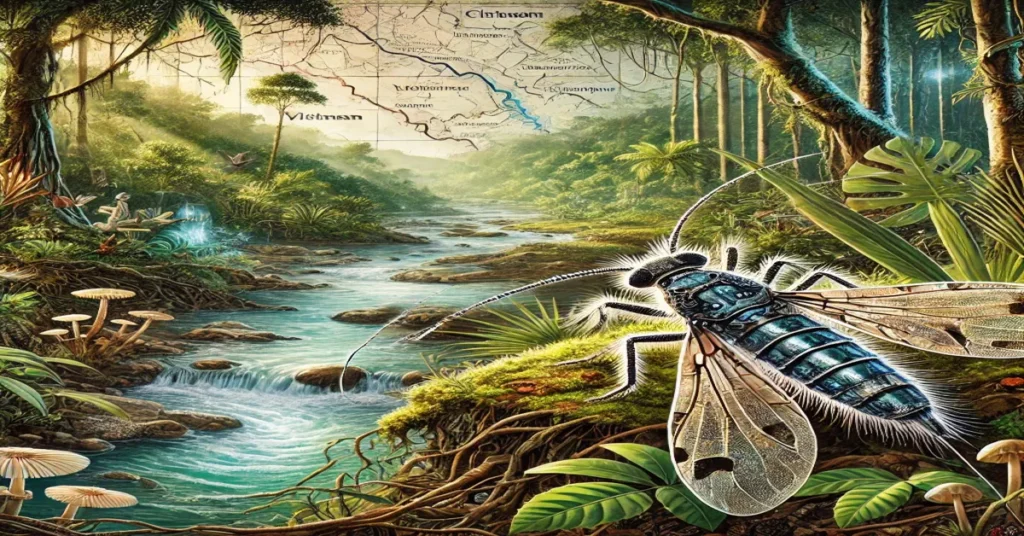
Preferred Habitats
- Tropical Rainforests:
- The Vietnam Cambodia new lanternfly species thrives in the dense, humid conditions of tropical rainforests. The rich biodiversity of these rainforests provides a variety of plants for the lanternfly to feed on. These habitats offer ample moisture and stable temperatures, ideal for the lanternfly’s survival.
- Subtropical Forests:
- In addition to tropical rainforests, the species has been found in subtropical forests, where temperatures are still warm, and humidity levels are high. These environments also host numerous plant species that serve as feeding sources for the lanternfly.
- Agricultural Areas:
- The Vietnam Cambodia new lanternfly species has also been observed in agricultural zones, particularly where crops like fruit trees, rubber, and tea are cultivated. In these areas, the lanternfly poses a significant threat to crops by feeding on plant sap.
- Urban Green Spaces:
- This lanternfly species has shown adaptability to urban green spaces, where it can find host plants in gardens, parks, and other cultivated areas. Its ability to thrive in urban environments increases the risk of its spread to agricultural zones.
Geographical Range
The Vietnam Cambodia new lanternfly species is native to the forests of Vietnam and Cambodia, but its distribution is likely to expand due to its adaptability. Given the mobility of lanternflies and the diverse ecosystems across Southeast Asia, there is a risk that this species could spread to other countries in the region, including Laos, Thailand, and Myanmar. The Vietnam Cambodia new lanternfly species may even pose a risk to countries outside Southeast Asia if it is inadvertently introduced through global trade.
3. Feeding Behavior and Diet
Lanternflies are sap-feeding insects, and the Vietnam Cambodia new lanternfly species is no different. Its feeding behavior is central to its role in the ecosystem but also the challenges it presents to agriculture.

Feeding Mechanism
- Sap Feeding:
- The Vietnam Cambodia new lanternfly species uses its proboscis to pierce the bark and vascular tissues of plants and feed on their sap. This feeding behavior not only nourishes the lanternfly but also causes damage to the host plant by draining its resources.
- Host Plants:
- The Vietnam Cambodia new lanternfly species feeds on a wide variety of trees and plants, including tropical hardwoods and agricultural crops. It is particularly attracted to fruit trees, citrus crops, and rubber trees, all of which are of economic importance in the region.
- Honeydew Production:
- As the Vietnam Cambodia new lanternfly species feeds on sap, it excretes a sugary substance known as honeydew. This honeydew can accumulate on the surfaces of leaves and branches, encouraging the growth of sooty mold, a fungus that blocks sunlight and reduces photosynthesis, ultimately weakening the plant.
- Impact on Plant Health:
- The feeding behavior of the Vietnam Cambodia new lanternfly species can stress plants, reduce growth rates, and even lead to the death of certain trees, especially if the infestation is severe. The spread of honeydew and the growth of sooty mold can compound these problems.
4. Ecological Role and Impact
The Vietnam Cambodia new lanternfly species plays an important role in the local food web but also has significant impacts on the ecosystems it inhabits. While it is an essential part of the local biodiversity, its feeding habits can cause problems for plant health, agriculture, and other species.
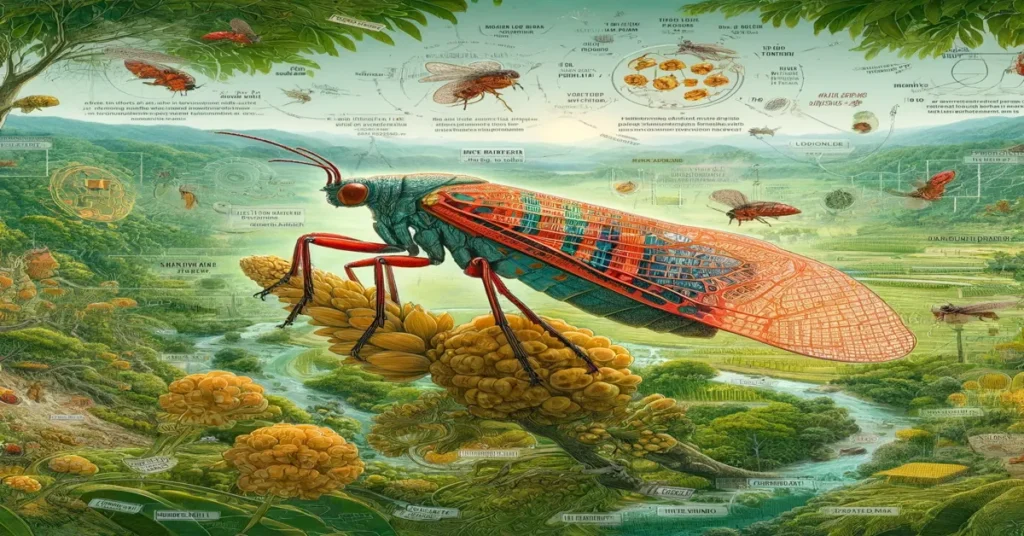
Role in the Ecosystem
- Part of the Food Web:
- As an herbivore, the Vietnam Cambodia new lanternfly species serves as a food source for various predators, including birds, bats, and insectivorous mammals. Its presence in the ecosystem contributes to the food web by supporting these predators.
- Nutrient Cycling:
- The honeydew excreted by the Vietnam Cambodia new lanternfly species contributes organic material to the ecosystem, which can be broken down by decomposers and used in nutrient cycling. However, this can also contribute to the growth of molds and fungi, affecting other plants and organisms.
- Impact on Plant Communities:
- The feeding behavior of the Vietnam Cambodia new lanternfly species can damage trees and plants, especially those in agricultural areas. By weakening host plants, lanternflies can alter plant communities and open up space for invasive species to take over.
Invasive Potential and Threats to Agriculture
- Agricultural Damage:
- The Vietnam Cambodia new lanternfly species poses a significant threat to agriculture. By feeding on sap, the lanternfly can damage fruit trees, rubber plants, tea bushes, and citrus crops. These crops are vital to the local economy, and damage caused by the lanternfly could result in significant economic losses for farmers.
- Spread of Plant Diseases:
- Lanternflies are vectors for various plant diseases, including phytoplasmas and fungal infections. The Vietnam Cambodia new lanternfly species may be capable of transmitting these pathogens, further exacerbating the damage it causes to plants and crops.
- Economic Impact:
- The introduction and spread of the Vietnam Cambodia new lanternfly species could lead to substantial economic losses for farmers in Southeast Asia. The cost of controlling the infestation, including pesticide use and eradication efforts, could further burden agricultural communities.
5. Conservation and Management Efforts
Given the potential threats posed by the Vietnam Cambodia new lanternfly species, it is crucial to implement conservation and management strategies that can mitigate its spread and minimize its impacts.
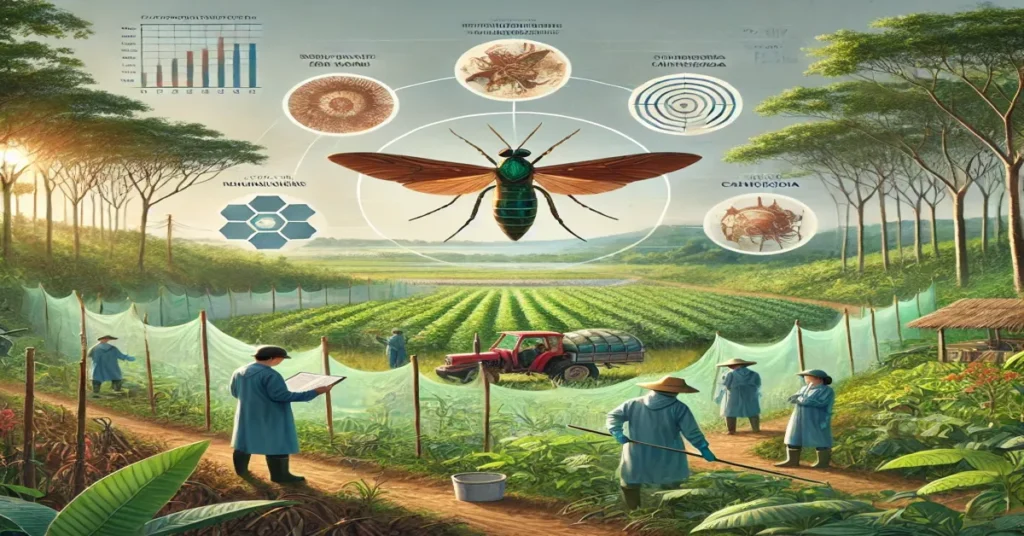
Monitoring and Early Detection
Early detection is critical for preventing the spread of the Vietnam Cambodia new lanternfly species. Monitoring programs should be established in areas where the lanternfly has been discovered, and surveillance should be carried out regularly to track its movement and population growth.
Control and Eradication
- Biological Control:
- One potential solution is to introduce natural predators or parasitoids that specifically target the Vietnam Cambodia new lanternfly species. These could help control its population in a way that is environmentally sustainable and less harmful to other species.
- Pesticides and Integrated Pest Management:
- While pesticides may be effective in the short term, they can have harmful effects on the environment and non-target species. Integrated pest management (IPM) strategies that combine biological control, cultural practices, and minimal pesticide use can help manage lanternfly populations without causing significant harm to the ecosystem.
Public Awareness and Education
Educating the public about the Vietnam Cambodia new lanternfly species is crucial for preventing its spread. Farmers, conservationists, and the general public should be informed about the lanternfly’s feeding habits, potential agricultural impacts, and methods for preventing its spread.
Conclusion
The discovery of the Vietnam Cambodia new lanternfly species has raised important concerns for both biodiversity and agriculture in Southeast Asia. While this species plays a role in the local ecosystem, its feeding behavior and potential to spread plant diseases make it a significant threat to both native plants and economically important crops. By understanding the environmental niche of this new lanternfly species, we can develop effective strategies to mitigate its impact and protect the agricultural industries in the region. Conservation efforts, early detection, and sustainable management practices are crucial to controlling the spread of this species and minimizing the risks it poses to ecosystems and economies.
Read More: What Are Flies Attracted To? Understanding Fly Behavior and Environmental Impacts

